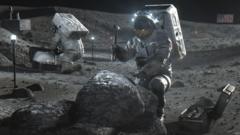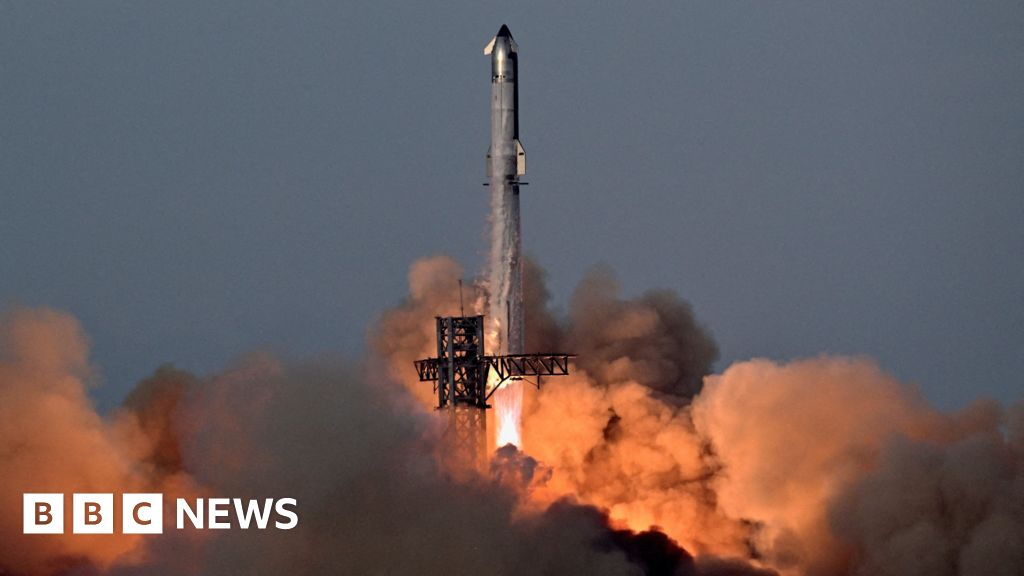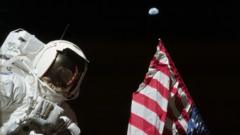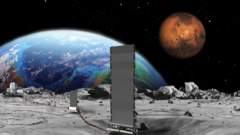Inside a massive experimental chamber, engineers from Sierra Space are advancing a new technology designed to produce oxygen under conditions that mimic the Moon’s environment. The centerpiece of their work is a unique machine, enclosed in a gleaming metallic sphere, that will one day convert lunar soil into breathable oxygen.
As the experiment commenced, the machine began ingesting samples of regolith—a blend of fine dust and sharp fragments similar to actual lunar soil. Under high temperatures exceeding 1,650 degrees Celsius, the regolith transformed as oxygen-containing molecules started to release into the atmosphere. “We’ve tested everything we can on Earth now,” noted Brant White, a program manager at Sierra Space. “The next step is going to the Moon.”
This experiment took place this past summer at NASA’s Johnson Space Center, highlighting a growing array of technologies aimed at supporting human presence on the Moon. Future lunar explorers will require oxygen not only for breathing but also for manufacturing rocket fuel to propel spacecraft to further destinations, like Mars.
While astronauts might also need metal for various applications, scientists are optimistic about the potential to harvest these resources from lunar regolith. “It could save billions of dollars from mission costs,” Mr. White mentioned, explaining how transporting vast amounts of supplies from Earth would be costly and impractical.
The lunar regolith is rich in metal oxides. However, extracting oxygen from these compounds poses unique challenges due to the Moon's environmental conditions. Sierra Space’s cylindrical chamber recreates the vacuum, pressure, and temperature found on the lunar surface, but the abrasive nature of regolith has necessitated ongoing adjustments to their technology.
Tests on Earth cannot replicate one critical factor—lunar gravity, which is approximately one-sixth that of Earth. Sierra Space anticipates that it may not get the chance to simulate these conditions until at least 2028. Paul Burke from Johns Hopkins University emphasizes the significance of gravity on the success of certain oxygen extraction processes. His research highlighted how the weak gravity on the Moon hampers oxygen bubble formation during molten electrolysis.
This method, which relies on using electricity to extract oxygen from lunar minerals, may require innovative solutions, such as vibrating the equipment or using smoother electrodes. In contrast, Sierra Space’s carbothermal process allows oxygen bubbles to form freely in the regolith, minimizing the possibility of them getting trapped.
According to Dr. Burke, an astronaut could require roughly two to three kilograms of regolith daily for sufficient oxygen, though recycling systems onboard a lunar base could reduce that need. The wider applicability of oxygen-extraction technologies lies in supporting rocket fuel production, a major step for deep-space missions.
At Massachusetts Institute of Technology, Palak Patel and her team have developed a similar experimental system for extracting oxygen and metals from lunar soil, focusing on minimizing the necessity for resupply missions. They addressed the low-gravity issue by incorporating sound wave technology to aid the oxygen separation process.
Future lunar missions could lead to the extraction of essential materials like iron, titanium, and lithium from regolith, creating opportunities for 3D printing replacement parts on the Moon. Ms. Patel also highlights exciting possibilities, such as creating strong bricks from processed regolith for Moon-based construction endeavors, showcasing the untapped potential of lunar resources.


















